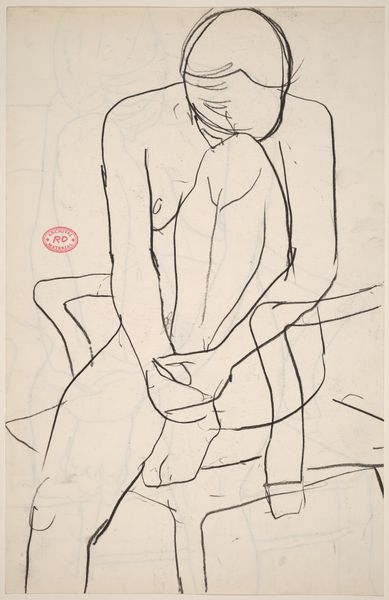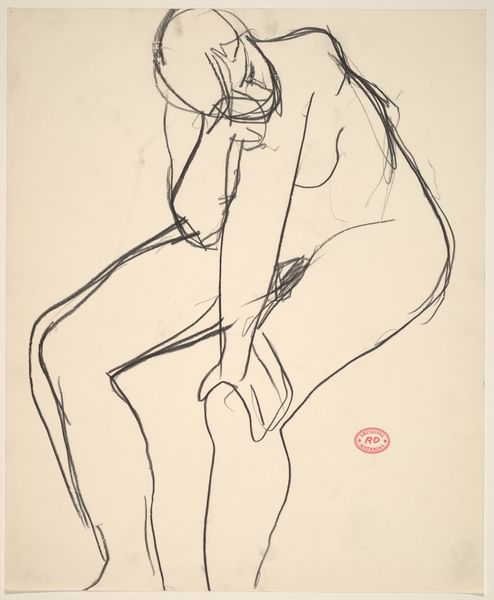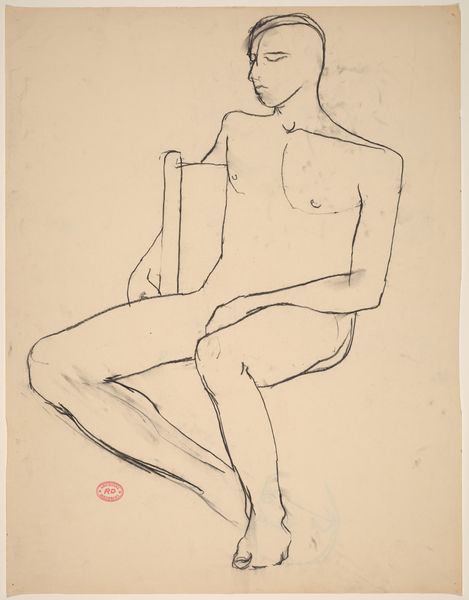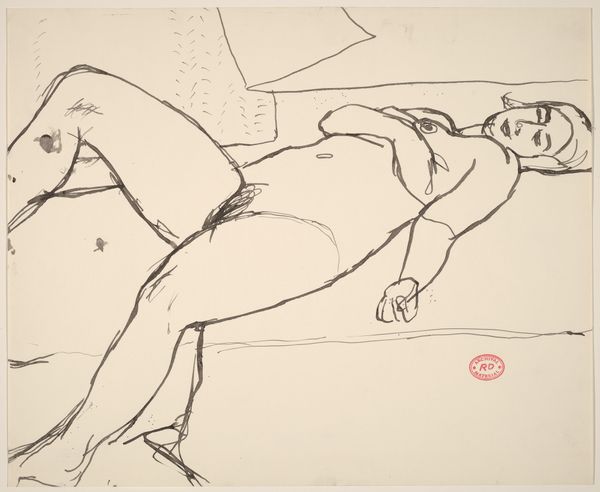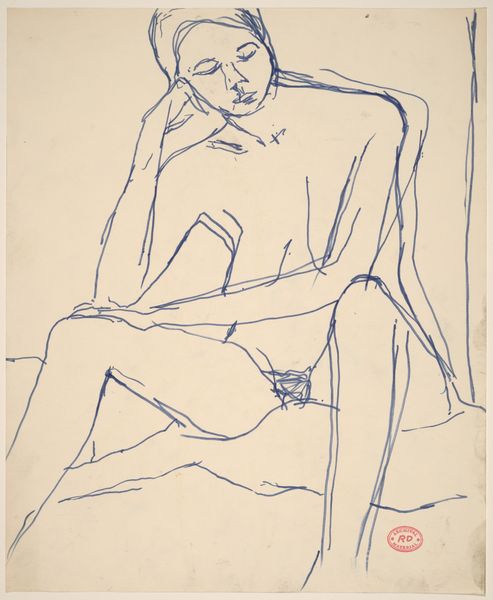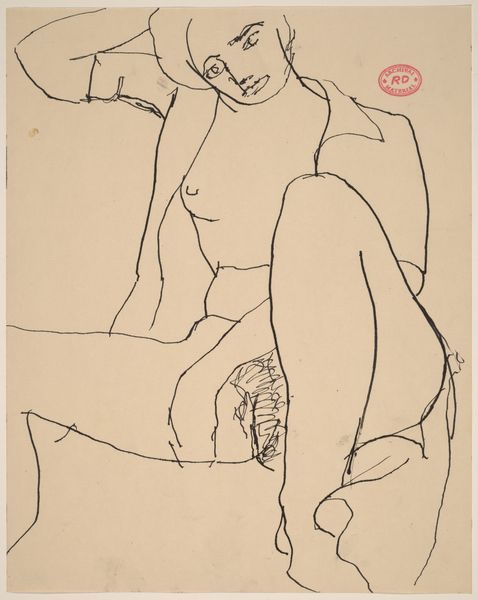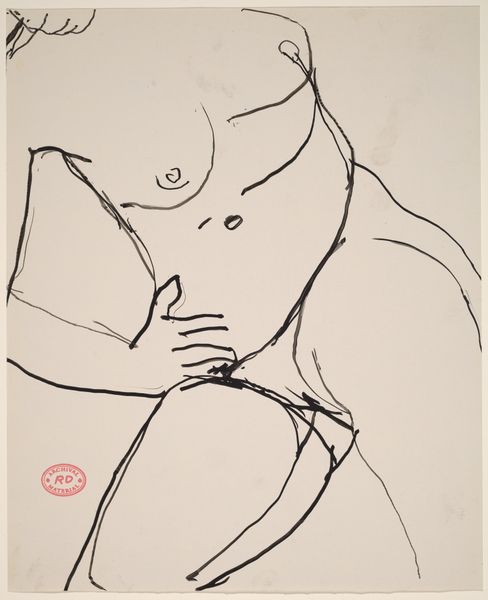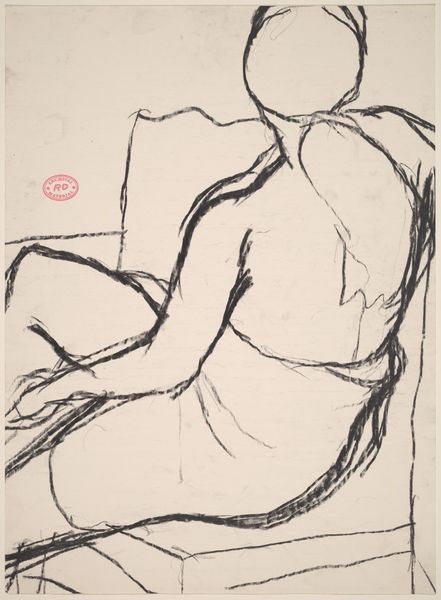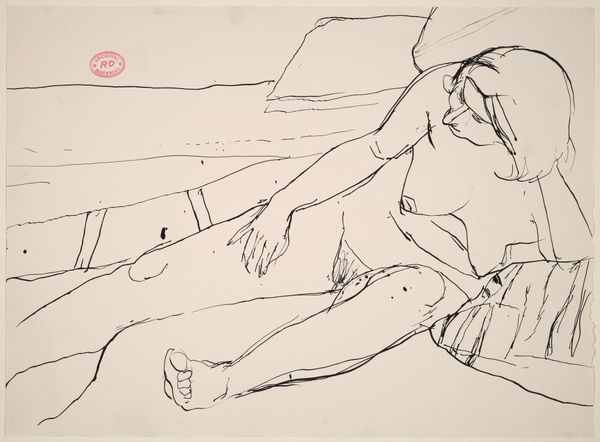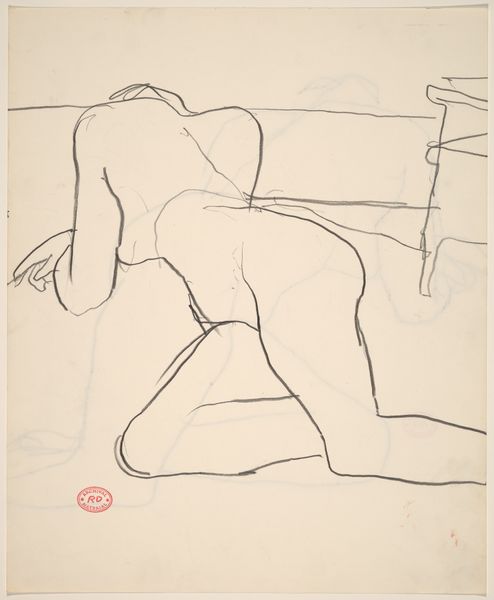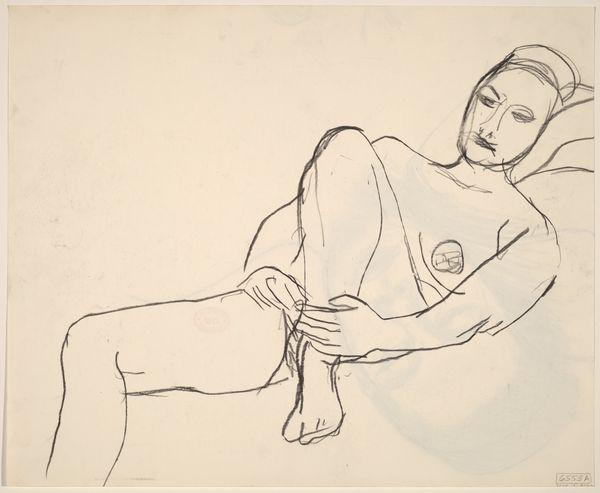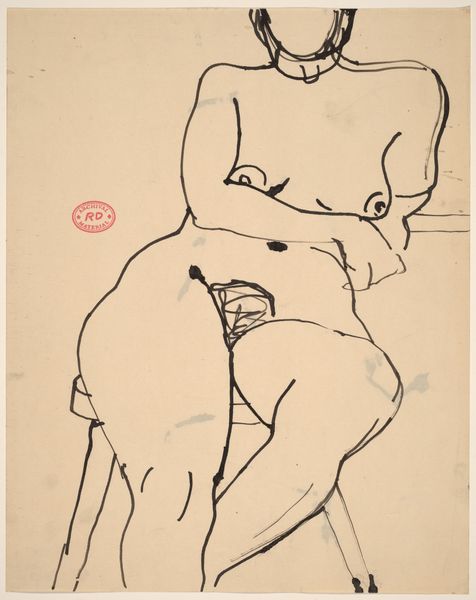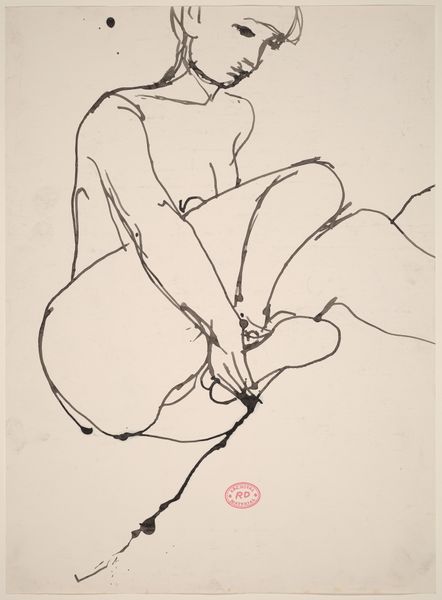![Untitled [seated female nude slouching over chair arm] by Richard Diebenkorn](/_next/image?url=https%3A%2F%2Fd2w8kbdekdi1gv.cloudfront.net%2FeyJidWNrZXQiOiAiYXJ0ZXJhLWltYWdlcy1idWNrZXQiLCAia2V5IjogImFydHdvcmtzLzM3MTQ4YmI2LWEwZmYtNDVjNi1iNGUwLTlmNjA5YTgzMWQxNi8zNzE0OGJiNi1hMGZmLTQ1YzYtYjRlMC05ZjYwOWE4MzFkMTZfZnVsbC5qcGciLCAiZWRpdHMiOiB7InJlc2l6ZSI6IHsid2lkdGgiOiAxOTIwLCAiaGVpZ2h0IjogMTkyMCwgImZpdCI6ICJpbnNpZGUifX19&w=3840&q=75)
Untitled [seated female nude slouching over chair arm] 1955 - 1967
0:00
0:00
drawing, charcoal
#
drawing
#
figuration
#
bay-area-figurative-movement
#
abstraction
#
charcoal
#
nude
#
realism
Dimensions: overall: 43.2 x 35.5 cm (17 x 14 in.)
Copyright: National Gallery of Art: CC0 1.0
Editor: This charcoal drawing by Richard Diebenkorn, *Untitled [seated female nude slouching over chair arm]*, made sometime between 1955 and 1967, is striking for its almost brutally honest depiction of the human form. What do you see in this piece, from a historical perspective? Curator: Well, this drawing, even in its seeming simplicity, speaks volumes about the shifting attitudes toward the nude in post-war art. It breaks from idealized portrayals. This is a figure in repose, not necessarily posed to be looked at. Diebenkorn gives us an almost anti-heroic nude. Do you think this challenges traditional power dynamics? Editor: I think so. It feels…vulnerable. There’s no attempt to romanticize the figure. The visible charcoal strokes add to that rawness, pushing against the traditional canon of the "ideal" female form. Curator: Exactly. It's also important to remember that this was created during a period when abstract expressionism was dominant. Diebenkorn, while experimenting with abstraction, consistently returned to figuration. Was that a form of quiet rebellion, perhaps? A refusal to completely abandon the human subject in art? Editor: That's a compelling thought! Maybe clinging to representation offered him a space for personal expression that pure abstraction didn’t quite provide. And given how "serious" and masculine abstract expressionism could be, this more intimate approach almost feels like a counter-narrative. Curator: Indeed. We see Diebenkorn participating in a larger conversation about the representation of the body, and implicitly about who gets to do the representing, and whose bodies are deemed worthy of artistic attention. Editor: I hadn’t thought of it that way before, as part of a broader cultural discussion about the body and representation. It enriches my understanding significantly. Thank you! Curator: My pleasure. It’s always exciting to discover these connections between art and its surrounding social and historical context.
Comments
No comments
Be the first to comment and join the conversation on the ultimate creative platform.
